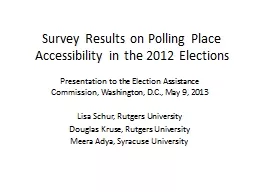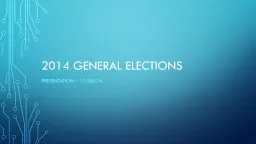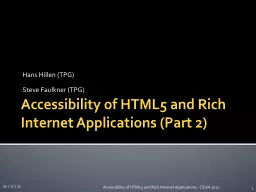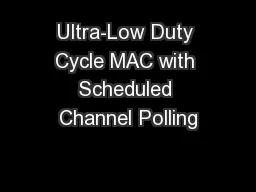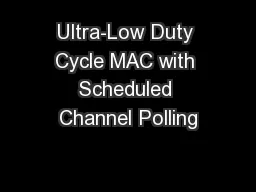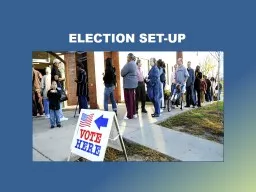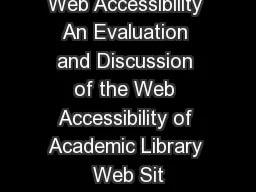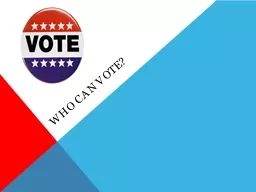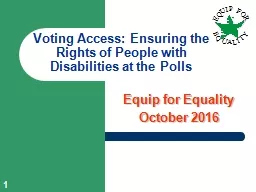PPT-Survey Results on Polling Place Accessibility in the 2012 E
Author : celsa-spraggs | Published Date : 2018-01-15
Presentation to the Election Assistance Commission Washington DC May 9 2013 Lisa Schur Rutgers University Douglas Kruse Rutgers University Meera Adya Syracuse
Presentation Embed Code
Download Presentation
Download Presentation The PPT/PDF document "Survey Results on Polling Place Accessib..." is the property of its rightful owner. Permission is granted to download and print the materials on this website for personal, non-commercial use only, and to display it on your personal computer provided you do not modify the materials and that you retain all copyright notices contained in the materials. By downloading content from our website, you accept the terms of this agreement.
Survey Results on Polling Place Accessibility in the 2012 E: Transcript
Download Rules Of Document
"Survey Results on Polling Place Accessibility in the 2012 E"The content belongs to its owner. You may download and print it for personal use, without modification, and keep all copyright notices. By downloading, you agree to these terms.
Related Documents

